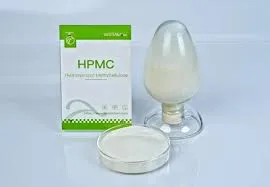
វិច្ឆិកា . 16, 2024 06:28 Back to list
is hpmc safe
Is HPMC Safe? A Comprehensive Examination
Hydroxypropyl Methylcellulose (HPMC) is a semi-synthetic polymer derived from cellulose, widely used in various applications, including pharmaceuticals, food products, cosmetics, and construction materials. As its usage has surged, concerns regarding its safety have also emerged. This article aims to provide an in-depth examination of HPMC, focusing on its safety profile and various applications.
Understanding HPMC
HPMC is formed by the modification of cellulose through the addition of hydroxypropyl and methyl groups. This modification enhances its solubility in water and stability under diverse pH conditions. HPMC's versatility makes it an essential ingredient in many products. In the pharmaceutical industry, it serves as a thickening agent, binder, and film-former in drug formulations. In food products, it acts as a stabilizer and emulsifier, improving texture and shelf-life. Additionally, HPMC is found in cosmetics for its ability to provide a smooth application and enhance moisture retention.
Safety Profile
Is HPMC Safe? A Comprehensive Examination
In pharmaceutical formulations, HPMC is often used as a coating agent and is considered to have a favorable safety profile. Extensive studies indicate that HPMC does not exhibit any harmful effects when used as directed. For instance, clinical studies on ophthalmic formulations containing HPMC have shown no adverse reactions in patients, affirming its safety for use in eye drops and other ocular applications.
is hpmc safe

Possible Concerns
Although HPMC is generally considered safe, there are a few considerations to bear in mind. Some individuals may have specific sensitivities or allergies to ingredients in products containing HPMC. While rare, skin irritations or allergic reactions can occur, particularly in cosmetic products. Therefore, it is always wise to conduct a patch test before using a new product.
Another area of concern is the source of cellulose used in HPMC production. Since HPMC is derived from plant materials, the potential for contamination is an important factor, especially in food applications. Manufacturers are required to follow stringent quality control measures to ensure the purity of HPMC and other ingredients.
Conclusion
In summary, Hydroxypropyl Methylcellulose (HPMC) is a widely used compound with a strong safety profile in various industries, including food, pharmaceuticals, and cosmetics. Its classification as GRAS by the FDA further underscores its safety for use in food products. While some individuals may experience sensitivities, the overall risk associated with HPMC is minimal. As always, consumers should be vigilant about reading labels and understanding the components of the products they use.
As research continues and new formulations are developed, ongoing assessment of HPMC’s safety will be important to ensure that it remains a reliable and safe ingredient across its various applications. Always consult with healthcare professionals if you have questions regarding the use of products containing HPMC, especially if you have pre-existing conditions or concerns about allergies. In general, for most consumers, HPMC is a safe and effective ingredient that enhances the quality and functionality of numerous products.
-
Unlocking the Benefits of HPMC Products: A Gateway to Versatile Applications
NewsAug.07,2025
-
Unleashing the Potential of HPMC Ashland: A Comprehensive Look
NewsAug.07,2025
-
Tile Bonding Cellulose: The Key to Superior Adhesion and Durability
NewsAug.07,2025
-
Hydroxypropyl Methylcellulose Powder: The Versatile Component in Modern Pharmaceuticals
NewsAug.07,2025
-
Hydroxyethyl Cellulose: The Versatile Solution for Various Industries
NewsAug.07,2025
-
Hydroxyethyl Cellulose (HEC): The Versatile Polymer for Various Applications
NewsAug.07,2025







